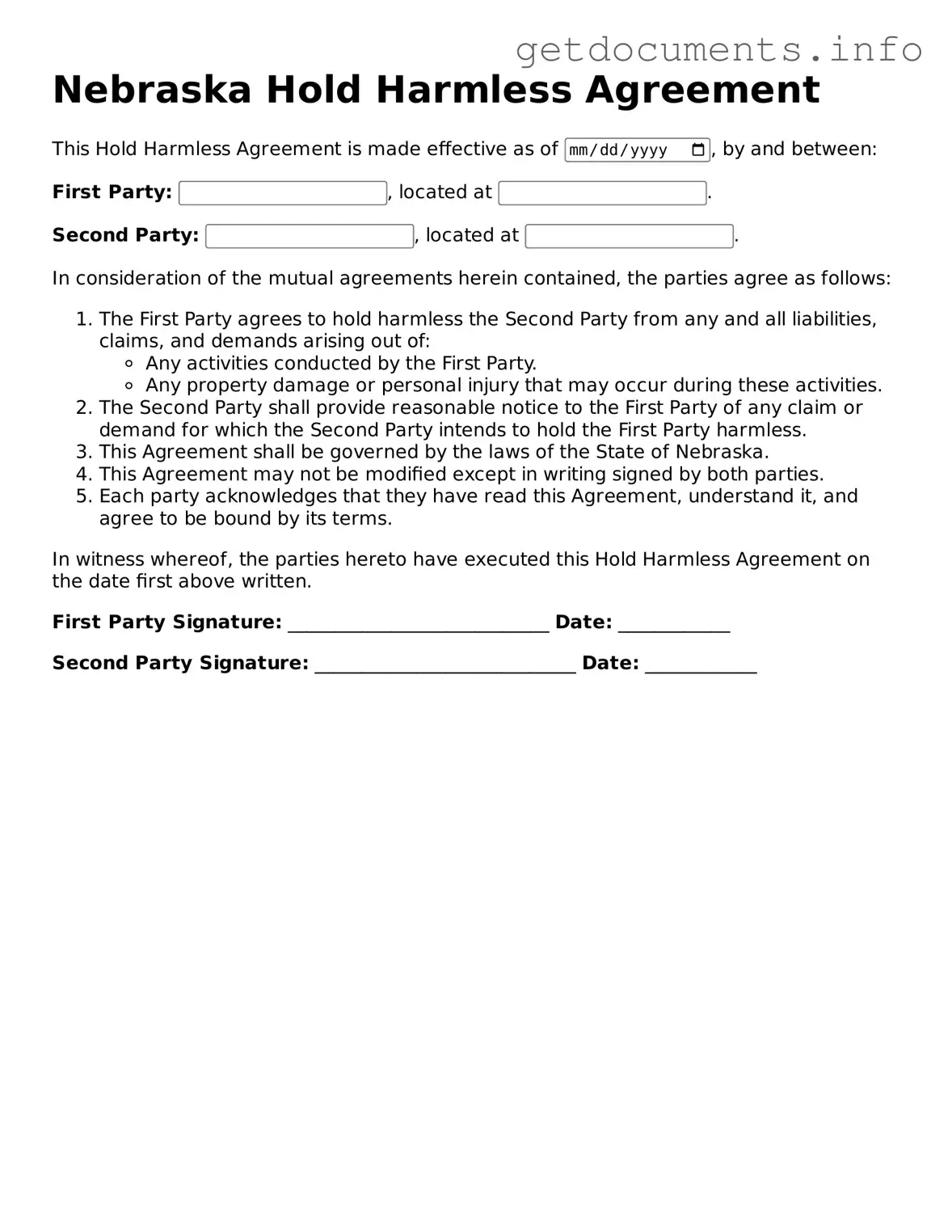The Nebraska Hold Harmless Agreement form serves as a vital tool for individuals and organizations seeking to protect themselves from potential liabilities. This agreement outlines the responsibilities of parties involved in various activities, ensuring that one party agrees to assume the risks associated with certain actions or events. It is commonly used in situations where one party may be exposed to legal claims due to the actions of another, such as in rental agreements, event planning, or construction projects. By clearly stating the terms of liability, this form helps to foster a sense of security and understanding between the parties involved. The document typically includes details such as the specific activities covered, the duration of the agreement, and any relevant contact information. Overall, the Nebraska Hold Harmless Agreement is an essential component for anyone looking to navigate the complexities of liability in various interactions, promoting a safer and more responsible environment for all parties involved.
